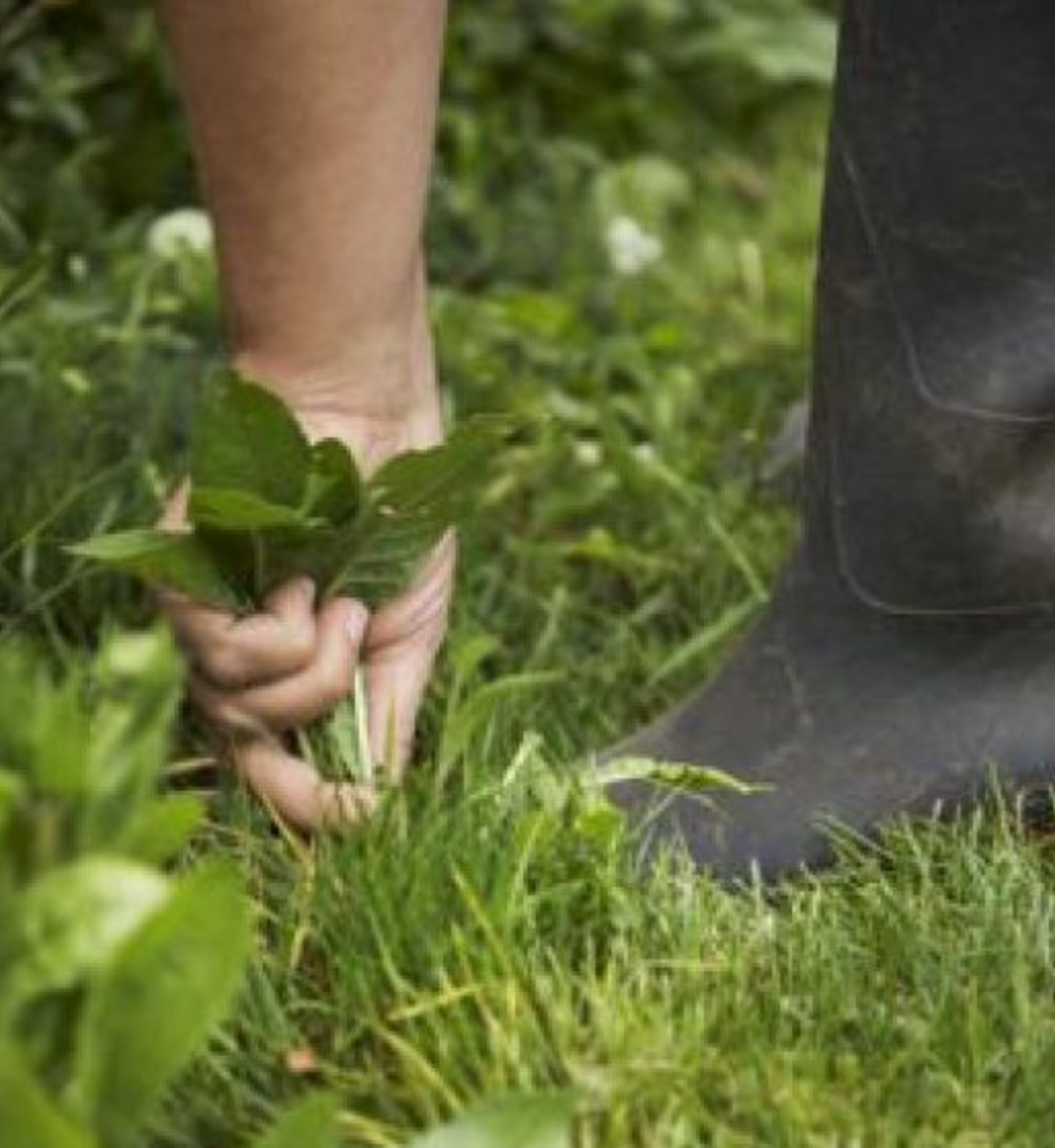Daucus carota is a biennial plant that grows a
rosette of leaves in the spring and summer, while building up the stout taproot that stores large amounts of sugars for the plant to flower in the second year
Soon after germination, carrot seedlings show a distinct demarcation between the taproot and the stem. The latter is thicker and lacks lateral roots. At the upper end of the stem is the seed leaf. The first true leaf appears about 10–15 days after germination. Subsequent leaves, produced from the stem nodes, are alternating (with a single leaf attached to a node, and the leaves growing in alternate directions) and compound , and
arranged in a spiral. The leaf blades are pinnate . As the plant grows, the bases of the seed leaves are pushed apart. The stem, located just above the ground, is compressed and the internodes are not distinct. When the seed stalk elongates, the tip of the stem narrows and becomes pointed, extends upward, and becomes a highly branched
inflorescence . The stems grow to 60–200 cm (20–80 in) tall.
Most of the taproot consists of a pulpy outer cortex (phloem ) and an inner core (xylem). High-quality carrots have a large proportion of cortex compared to core. Although a completely xylem-free carrot is not possible, some cultivars have small and deeply pigmented cores; the taproot can appear to lack a core when the colour of the cortex and core are similar in intensity. Taproots typically have a long conical shape, although cylindrical and round cultivars are available. The root diameter can range from 1 cm (0.4 in) to as much as 10 cm (4 in) at the widest part. The root length ranges from 5 to 50 cm (2.0 to 19.7 in), although most are between 10 and 25 cm (4 and 10 in).
Flower development begins when the flat
meristem changes from producing leaves to an uplifted, conical meristem capable of producing stem elongation and an cluster of flowers . The cluster is a compound umbel , and each umbel contains several smaller umbels (umbellets). The first (primary) umbel occurs at the end of the main floral stem; smaller secondary umbels grow from the main branch, and these further branch into third, fourth, and even later-flowering umbels. A large, primary umbel can contain up to 50 umbellets, each of which may have as many as 50 flowers; subsequent umbels have fewer flowers. Flowers are small and white, sometimes with a light green or yellow tint. They consist of five petals, five stamens , and an entire calyx. The stamens usually split and the stamens fall off before the stigma becomes receptive to receive pollen. The stamens of the brown, male, sterile flowers degenerate and shrivel before the flower fully opens. In the other type of male sterile flower, the stamens are replaced by petals, and these petals do not fall off. A nectar-containing disc is present on the upper surface of the
carpels.
Flowers consist of five petals, five stamens, and an entire calyx. Flowers change sex in their development, so the stamens release their pollen before the stigma of the same flower is receptive. The arrangement is centripetal, meaning the oldest flowers are near the edge and the youngest flowers are in the center. Flowers usually first open at the outer edge of the primary umbel, followed about a week later on the secondary umbels, and then in subsequent weeks in higher-order umbels. The usual flowering period of individual umbels is 7 to 10 days, so a plant can be in the process of flowering for 30–50 days. The distinctive umbels and floral nectaries attract pollinating insects. After fertilization and as seeds develop, the outer umbellets of an umbel bend inward causing the umbel shape to change from slightly convex or fairly flat to concave, and when cupped it resembles a bird's nest.The fruit that develops is a schizocarp consisting of two mericarps ; each mericarp is a true seed . The paired mericarps are easily separated when they are dry. Premature separation (shattering) before harvest is undesirable because it can result in seed loss.
Mature seeds are flattened on the commissural side that faced the septum of the ovary. The flattened side has five longitudinal ribs. The bristly hairs that protrude from some ribs are usually removed by abrasion during
milling and cleaning. Seeds also contain oil ducts and canals. Seeds vary somewhat in size, ranging from less than 500 to more than 1000 seeds per gram. The carrot is a diploid species, and has nine relatively short, uniform-length chromosomes (2 n=9). The genome size is estimated to be 473 mega base pairs, which is four times larger than Arabidopsis thaliana , one-fifth the size of the maize genome, and about the same size as the rice genome.







